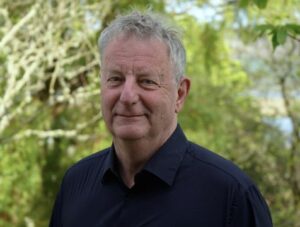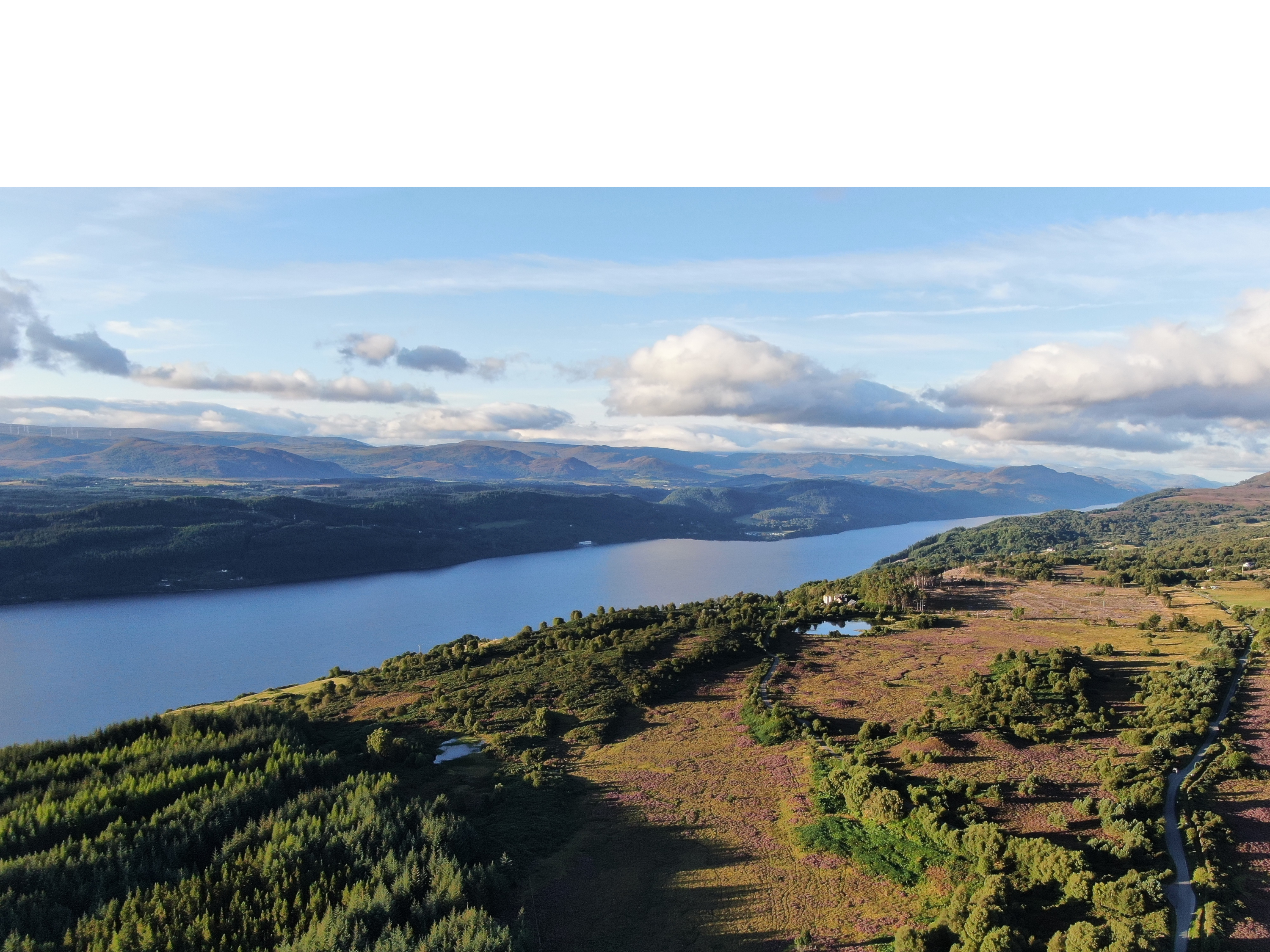Das folgende Interview ist als Original in englischer Sprache verfasst. Für die deutsche Übersetzung klicken Sie bitte hier.
At bettervest, we’re known for enabling investments in proven climate solutions like solar energy, clean cooking, and wind power. But we also look beyond the familiar—toward emerging innovations and fresh thinking across the impact spectrum. In this spirit, we’re exploring the fast-evolving field of rewilding: restoring ecosystems to increase biodiversity, sequester carbon, and support resilient local economies.
Highlands Rewilding, founded by former solar entrepreneur Jeremy Leggett, is pioneering a model that blends ecological restoration with financial viability. In this written interview, Leggett shares what motivated him, how the business model works, and what kind of real-world impact rewilding can deliver-for nature, people, and investors alike.

bettervest: Jeremy, what inspired you to found Highlands Rewilding?
Was there a specific moment or experience that led you to dedicate yourself to restoring nature and rethinking land ownership?
Jeremy: It was an evolving process. I began to worry about climate change in the mid 1980s, when I was researching the geological history of oceans. By 1989 I was a full time campaigner as head of science in the climate campaign at Greenpeace International. In 1996 I set up a solar company, Solarcentury, to take my campaigning directly into energy markets. Statkraft acquired Solarcentury in 2020, leaving me with a few million pounds with which to keep campaigning. By then I knew that it won’t be possible to reverse climate meltdown with clean energy alone, no matter how successful it’s growth might be in knocking out fossil fuels. I had also long since learned that unless we reverse biodiversity collapse nothing else will ultimately matter anyway. Hence the decision to launch an entrepreneurial venture that targeted both climate meltdown and biodiversity collapse via nature recovery.
bettervest: How does the business model of Highlands Rewilding work?
How do you generate revenue through natural capital, and how do you ensure that ecological and community outcomes are prioritized alongside investor returns?
Jeremy: Between 2020 and 2023 we acquired land on which to develop natural-capital science and land management expertise (1,967 ha). From 2024 to 2025 we evolved from asset ownership to an asset light model in which going forward we will be a data- and science-led services provider to landowners of all kinds.

Readers can check the detail of our data and science work in four annual natural capital reports, which can be downloaded from our website. We have used multiple scientific techniques and technologies across multiple habitat types. We work in this kind of detail both to create confidence in eventual monetisation of our own natural capital, but also – crucially – to help build confidence generally that nature recovery can be trustably verified, helping nature to become an investable asset class.
We have two exemplary land management partnerships contracted, both with leases in place and working well. From these two alone we project a 15-year net profit potential of £40.5 million from just 940 hectares, using pricing and cost assumptions we argue are conservative. We have a good pipeline beyond. Revenue is based mainly on carbon and biodiversity bundled in credits (so-called charismatic carbon), and biodiversity credits, certificates or offsets. We can send a business plan summary deck to readers who want more details (contact: jeremy.leggett@highlandsrewilding.co.uk). We have a funding round underway between now and December, targeting high net-worth individuals, family offices and progressive organisations.
bettervest: One of your core principles is community involvement, especially through the Nature and Community In Perpetuity (NCIP) model. What does this approach look like in practice, and how does it benefit local people?
Jeremy: We have two partnerships with local community entities in one of our areas of operation, Tayvallich, that are vital to our purpose of nature recovery and community prosperity through rewilding taken to scale. The first is with the Barrahormid Trust, a local charity owned by a family office. Highlands Rewilding executes a land-management plan mutually agreed by charity and company. We pay our own costs. Company and charity then share the profits from monetised natural capital. We call this model our Operating System Partnership for Rewilding (OSPREY) model. The Barrahormid Trust have pledged unilaterally never to sell the land, and to keep it managed for nature and community prosperity in perpetuity. We call this the NCIP (Natural Capital In Perpetuity) variant of OSPREY.
We believe that it will be impossible to achieve national scale nature recovery without the full involvement and agency of local communities. Accordingly, we have a route map with nine stages as a means to achieve this. In our community at Tayvallich we have what many consider to be an exemplary partnership underway with a local community organization, the Tayvallich Initiative. We concluded a Memorandum of Understanding with them a year ago that has 24 action items. We have progressed most of these in the interim. For instance, the selling of land at cost to a local community has enabled it to pursue its top priority for self-help. This has been the sale of land to the Tayvallich Initiative, for the building of affordable homes. Beyond this, the selling of tenanted homes to tenants has provided security in the face of potential future land sales. This has been achieved twice in Tayvallich. Then there is the creation of fulfilling jobs in the service of nature and community. Highlands Rewilding currently employs 23 people, most of whom live in or near the communities wherein they work.
In Tayvallich we have set up an estate management board with three company representatives of the company, and seven from the local community. This body gives real agency to the community, in that the company clearly won’t be countenancing land-management operations that don’t command consensus on the management board. The board has met nine times now, and the meetings have proved to be functional and fun.

.
bettervest: How do you monitor and verify the outcomes of your rewilding efforts?
What role do technologies like eDNA sampling and drone surveys play in your ecological tracking?
Jeremy: We use a wide range of technologies, including eDNA and drone surveys. These are described in full, with results across different habitats, in the annual natural capital reports mentioned above. We consciously go well beyond the technology array that will likely be needed for baselining and the subsequent monitoring and verification regimes in monetization of natural capital. This, among other reasons, is to search for innovative techniques to make verification more effective and efficient.
bettervest: What measurable impact have you achieved so far – in terms of biodiversity restoration, carbon sequestration, and local employment?
Could you share specific examples that demonstrate the effectiveness of your approach?
Jeremy: We are only five years old, but have already seen a number of encouraging impacts. These include an increase in invertebrate and bird numbers upon removal of sheep, increase in grass species diversity following adaptive grazing by cattle, spectacular regeneration of native tree species in a felled monoculture plantation behind a deer fence, rapid recovery of ground where monoculture plantations inappropriately planted on peatland have been felled, and effective translocation of a keynote species (the hairy wood ant). We have directly boosted local employment with direct employment of scientists, rangers, foresters, and farmers, and indirect employment via boosting of local supply chains.
That said, please note that nature recovery is a long game. Quantification of carbon and biodiversity uplifts occur every five-year intervals in our business plan, and clearly if we succeed numbers will increase in a non-linear manner over time.
bettervest: What is your long-term vision for Highlands Rewilding over the next 10 to 20 years?
Do you see your model scaling beyond Scotland or influencing broader conversations around land stewardship and climate action?
Jeremy: We are ambitious, as the targets set by governments in the Paris Agreement on climate (2015) and the Kunming Montreal Framework on Biodiversity (2022) demand. Reversal of biodiversity decline to the extent specified in the latter treaty will require nationwide nature recovery in multiple nations. Highlands Rewilding’s vision is to help to lead that in Scotland, but also beyond.
I and a core of half a dozen of my Highlands Rewilding colleagues have a degree of previous success on which to draw, in another market vital to a liveable future. Solarcentury started life as a small solar startup in England. When Statkraft acquired us, we were had fast-growing national offices in more than a dozen countries on four continents. We dream of repeating the experience in a second market vital to a liveable future.
.
Did you find the topic of rewilding interesting?
For the Highlands Rewilding website click here
Contact Jeremy via: jeremy.leggett@highlandsrewilding.co.uk


